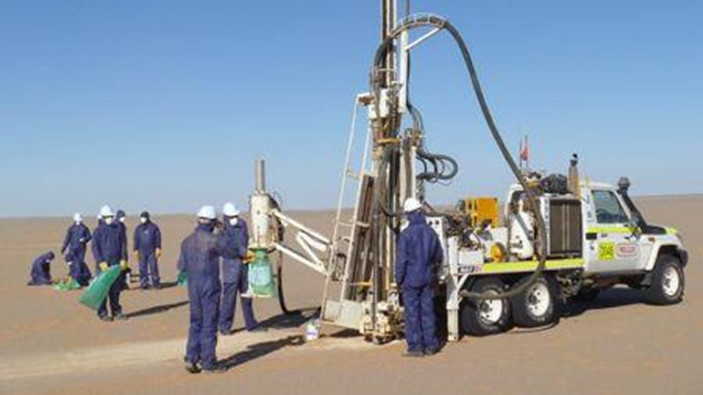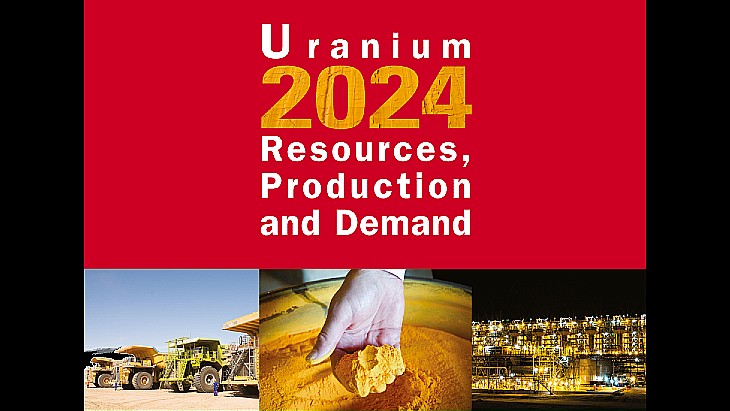https://www.agenceecofin.com/nomination ... nium-tirisMauritanie : Aura nomme Mohamed Sid'Ahmed DG des opérations sur sa mine d'uranium Tiris
Agence Ecofin 24 mars 2025
L'australien Aura Energy poursuit les efforts de développement de sa future mine d'uranium Tiris en Mauritanie, dont l’entrée en production est attendue d'ici 2027. La société compte sur le leadership de nouveaux cadres pour mener à bien ce projet.
La compagnie minière australienne Aura Energy a annoncé dans une note publiée ce lundi 24 mars la nomination de l'ingénieur mauritanien Mohamed Sid'Ahmed (photo) au poste de directeur général des opérations (GMO) pour son projet d'uranium Tiris. Ce nouveau développement survient dans un contexte où la société travaille à accélérer le développement de cet actif, qui est bien placé pour devenir la première mine d'uranium de ce pays sahélien.
Diplômé de l'École nationale supérieure des mines de Rabat (2002-2004), Mohamed Sid'Ahmed est déjà doté d'une certaine expérience dans la mise en œuvre de projets miniers clés, notamment en Afrique de l'Ouest. Jusqu'à sa nomination, il occupait en effet le poste de directeur général des opérations de la mine Goulamina de Léo Lithium au Mali. Auparavant, l'ingénieur a également tenu des postes de direction chez Kinross à la mine d'or de Tasiast, et pour les compagnies Teranga Gold Corporation et Endeavour Mining.
« De nationalité mauritanienne, cadre et ingénieur minier expérimenté, Mohamed apporte une grande expertise technique, opérationnelle et de gestion dans le cadre de projets nationaux et internationaux {...}. Sa nomination renforce le leadership opérationnel d'Aura alors que la société progresse vers la production » lit-on dans le communiqué.
Parallèlement à ce recrutement, notons qu'Aura Energy a aussi rapporté quelques avancées dans les travaux d'ingénierie et les efforts pour mobiliser les 230 millions USD nécessaires pour la construction de la future mine. À cet effet, on apprend notamment que les études hydrogéologiques approfondies réalisées sur le projet Tiris ont été achevées avec succès, mettant en évidence un potentiel d'approvisionnement hydrique suffisant pour soutenir les opérations de ce complexe.
Sur le volet du financement par ailleurs, Aura indique être en pourparlers avec une « banque de développement occidentale souveraine » pour obtenir un financement par emprunt pouvant couvrir 50 à 60% du coût total du projet. À l'étape actuelle, cette institution financière procède actuellement à des vérifications préalables, prévoyant une visite sur le site du projet en avril 2025 pour une éventuelle approbation du crédit.
La compagnie n'a néanmoins pas indiqué les pistes qu'elle envisage d'explorer pour mobiliser le reste des fonds. Cela pourrait prendre plus de temps que prévu, étant donné qu'Aura fait mention dans sa note d'un prolongement du calendrier de financement. On ignore quel impact cette décision aura sur le calendrier global du projet, alors que la décision finale d'investissement (FID) était attendue pour le 1er trimestre 2025.
Pour rappel, Aura prévoit actuellement de lancer la production d'uranium à Tiris en 2027. D'après le plan actuel du projet, l'opérateur prévoit de produire 2 millions de livres d'uranium sur une durée de vie de 25 ans. D'autres options de développement sont néanmoins en cours de planification, et pourraient voir la production annuelle d'environ 4 millions de livres sur 16 ans ou encore 3 millions de livres sur 18 ans.
Quoi qu'il en soit, la concrétisation de ce projet pourrait faire de la Mauritanie le deuxième producteur ouest-africain d'uranium, à un moment où l'énergie nucléaire bénéficie d'un regain d'intérêt à l'échelle mondiale. De quoi soutenir la diversification de l'industrie minière nationale, encore dominée par l'exploitation de l'or et du minerai de fer.
la page de Aura Energy sur le projet Tiris : https://auraenergy.com.au/project-portf ... m-project/
il y a une vidéo de 5 mn qui présente le projet.


